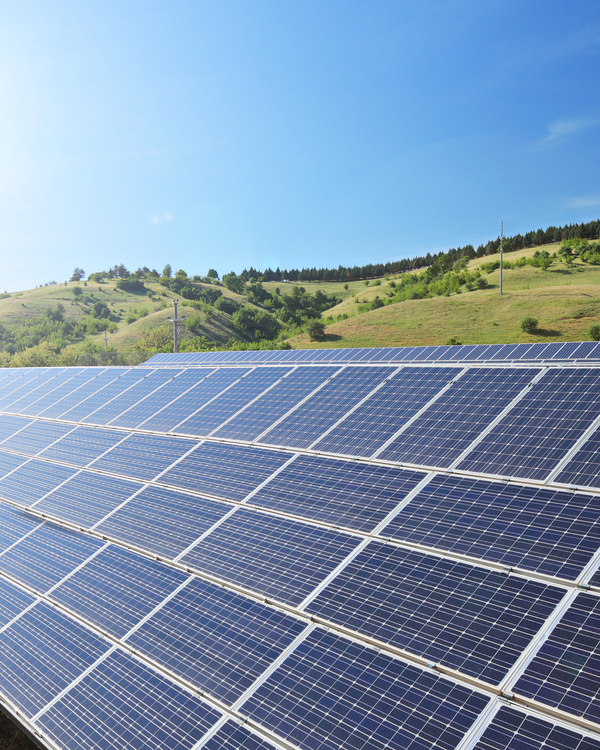CO2 emissions in the cement industry - our engagement
Cement production requires a lot of energy and therefore emits huge amounts of climate-damaging CO2. As an asset manager focussing on sustainability, we are therefore holding talks with leading cement manufacturers with the aim of driving forward CO2 reduction - an insight.
Simone Troxler, Jacqueline Oh, Rocchino Contangelo

The cement industry is responsible for around 7 to 8 per cent of global CO2 emissions every year. This makes it one of the largest industrial producers of greenhouse gas emissions. These primarily come from two sources: The calcination process, in which CO2 is produced as a by-product, and the combustion of fossil fuels to heat the kilns.
As a sustainable Swiss asset manager, we believe it makes sense to focus our climate engagement efforts on this sector. In Switzerland, around 80 per cent of the CO2 emissions of the Swiss equity market are attributable to the cement manufacturer Holcim (as at 2020/21).
Cement manufacturers take on challenges
Large listed cement companies such as CRH, Cemex, Holcim and Heidelberg Materials (formerly HeidelbergCement) are endeavouring to reduce CO2 emissions:
- Holcim aims to reduce CO2 emissions per tonne of cementitious materials to 420 kg by 2030. The company's management is therefore planning to make significant investments in carbon capture and storage (CCS) technologies. By 2030, over 5 million tonnes of CO2 are to be incorporated into building materials or permanently stored in the ground. Holcim is also active in recycling construction and demolition waste as part of its sustainability strategy.
What is CCS?
Carbon capture and storage (CCS) is the underground storage of carbon dioxide to prevent CO2 from being released into the atmosphere. The CO2 can be extracted from fossil energy supply plants, from waste incineration, through the use of biomass, from industrial plants or directly from the atmosphere. Suitable storage locations are depleted oil or gas deposits or deep geological reservoirs with highly saline water. In order to transport the CO2, it must first be converted from a gaseous to a liquid state. The CO2 is then transported via a pipeline to underground storage facilities and stored there.
- Cemex has set itself the goal of reducing CO2 emissions by 35 per cent by 2030. This is part of a broader "Future in Action" strategy that aims to produce CO2-free concrete. Cemex's initiatives include significant reductions in the carbon content per tonne of cementitious materials.
- Heidelberg Materials wants to become the first net-zero cement company in the industry. They have set science-based CO2 reduction targets in line with the international climate protection initiative (SBTi) and aim to reduce emissions by around 30 per cent by 2030 (base year 1990). Their strategies include the expansion of their EcoCrete product line, which offers a CO2 reduction of up to 66 per cent per cubic metre of concrete, and significant investment in CCS technologies.
- CRH has shown a strong performance in terms of sustainability. Previously, the company was ranked slightly below its peers on the Carbon Disclosure Project (CDP) list. However, it has now caught up. Last year, CRH revised its CO2 reduction targets based on the SBTi and updated them to a 1.5 degree scenario. This corresponds to a CO2 reduction of 30 per cent of absolute carbon emissions by 2030 (base year 2021). The company has adapted its operations and strategies to regional market requirements and is focussing on growth in the US market, where it has relocated its primary listing.
Two practical examples
Asset Management at Zürcher Kantonalbank has met with both Heidelberg Materials and Holcim in recent weeks to discuss the financing of CCS projects, among other things. The most important elements are summarised below:
- Heidelberg Materials is nearing completion of a CCS project in Brevik (Norway). The company has set itself the goal of offering carbon capture net-zero concrete across its entire product portfolio by 2050, and CCS projects play an important role in this. The plant in Brevik can store 400,000 tonnes of CO2 per year. This will halve the CO2 emissions from cement production. Heidelberg Materials has further CCS projects planned. Green bonds are a good way of financing such projects. We suggested this form of financing to the company as part of our involvement. Heidelberg Materials then confirmed that it would draw up a green bond framework by the end of the year. We will monitor the further development of the CCS projects and the status of their preparation and maintain an active dialogue with the company on an ongoing basis.
- Holcim is pursuing CCS projects with over 50 pilot projects in Europe and North America in order to achieve significant reductions in its own carbon emissions. In Europe, Holcim is focussing on the implementation of CO2 capture technologies in selected cement plants and the development of partnerships for the research and implementation of CCS projects. In North America, on the other hand, there are pilot projects for CO2 capture and sequestration with the aim of using these technologies on a large scale to minimise the environmental impact of its own production facilities. In the development of a Green Bond Framework, Holcim Heidelberg Materials is one step ahead: Holcim's Green Bond Framework has been defined and is ready for potential emissions.
Holcim has announced its intention to spin off its US business and float it on the stock exchange as an independent company. We will closely monitor the implications of this change for the Holcim Group and the new US company as part of our investment stewardship activities and fundamental investment processes.


